Maintaining a lush and healthy lawn in North Texas can be a challenge, but with proper care and attention, you can achieve a beautiful landscape to enjoy year-round.
From mowing practices to lawn fertilization, weed control, and watering, this comprehensive guide will provide you with essential tips and practices to keep your lawn in top condition. Read on to discover Lawn Care 101 for North Texans.
Know Your Grass Type and Soil
Having a healthy and vibrant lawn requires more than just regular maintenance and care. Understanding your grass type and soil is essential to achieving a lush and thriving yard.
Different grass types have varying needs when it comes to watering, mowing, and fertilization, which is why it’s essential to know your grass type and its specific requirements. Soil type also plays a significant role in lawn care, affecting nutrient absorption and water distribution.
For example, sandy soil requires more frequent watering, while clay soil retains moisture and may require aerating to improve drainage. By taking the time to understand your grass type and soil, you can develop a customized lawn care plan that optimizes your yard’s health and beauty. This approach helps you achieve a lawn that not only looks great but is also healthy and resilient over the long term.
Mowing Practices
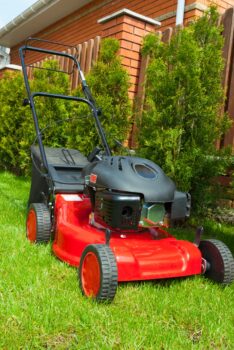
Proper lawn mowing is key to maintaining a healthy lawn. Here are some mowing practices to keep in mind:
Mow at the Right Height: Set your mower deck at the correct height for your grass type. For warm-season grasses like Bermuda, Zoysia, or St. Augustine, a mowing height of 1.5 to 2.5 inches is ideal. For cool-season grasses such as Fescue or Kentucky Bluegrass, a height of 2 to 3 inches is recommended.
Follow the One-Third Rule: Never remove more than one-third of the grass blade length during a single mowing session. Regularly mow your lawn to ensure you adhere to this rule, promoting healthier and more robust grass growth.
Keep Mower Blades Sharp: Dull blades can tear the grass, leading to brown tips and overall stress on your lawn. Regularly sharpen your mower blades or have them professionally serviced at least once a year.
Check out our Lawn Maintenance page for information on lawn services in Southlake, TX.
Lawn Fertilization
Fertilization is essential for providing the necessary nutrients to support healthy lawn growth. Here are some tips for effective lawn fertilization:
Test Your Soil: Before fertilizing, it’s crucial to conduct a soil test to determine its nutrient deficiencies and pH levels. This will help you choose the appropriate fertilizer and application rates.
Use the Right Fertilizer: Select a fertilizer that is specifically formulated for your grass type and the soil conditions in North Texas. Look for a balanced fertilizer with a nitrogen-phosphorus-potassium (NPK) ratio appropriate for your lawn’s needs.
Follow Fertilizer Application Schedules: Follow a regular fertilization schedule based on your grass type and the specific fertilizer you are using. Make sure to apply fertilizer evenly and avoid overlapping or missing any spots.
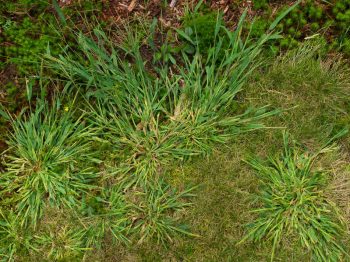
Weed Control
A weed-free lawn enhances the beauty and health of your yard. Here’s how to keep weeds at bay:
Maintain a Thick and Healthy Lawn: A dense and healthy lawn helps to crowd out weeds and reduces their ability to establish themselves. Proper mowing, lawn fertilization, and watering practices all contribute to a robust lawn that naturally inhibits weed growth.
Pre-emergent Herbicides: Apply pre-emergent herbicides in early spring and fall to target weed seeds before they germinate. This is particularly effective against crabgrass, one of the most common weeds in North Texas.
Spot Treatments: Use post-emergent herbicides or spot treatments to tackle existing weeds. Choose herbicides that are safe for your grass type and follow the instructions carefully.
Watering
Proper watering is essential for a healthy lawn. Consider the following watering tips:
Water Deeply and Infrequently: Water your lawn deeply to encourage deep root growth. Apply about 1 inch of water per week, providing enough moisture to reach 6 to 8 inches into the soil.
Water Early in the Morning: Watering in the early morning allows the grass to dry out during the day, reducing the risk of lawn diseases. Avoid watering in the evening or overnight, as prolonged moisture can lead to fungal growth.
Adjust for Rainfall: Adjust your watering schedule depending on rainfall amounts. A rain gauge or even a simple container can help you measure how much water your lawn receives and make necessary adjustments to your watering routine.
Aeration
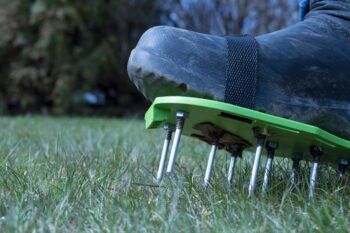
Lawn aeration is a crucial practice that often goes overlooked but plays a significant role in maintaining a healthy and vibrant yard. Over time, your lawn’s soil can become compacted, hindering root growth, nutrient absorption, and water infiltration.
Aeration involves the process of creating small holes in the soil, allowing air, water, and nutrients to penetrate deep into the roots. This essential practice improves soil structure, reduces thatch buildup, and promotes strong and robust grass growth.
Conclusion
Maintaining a vibrant and beautiful lawn in North Texas requires proper care and attention. By following mowing practices, fertilization guidelines, weed control methods, and adhering to proper watering techniques, you can cultivate a lush and healthy lawn to be proud of.
Regular maintenance and an understanding of your lawn’s specific needs will ensure that your North Texas landscape remains an oasis of natural beauty for years to come.

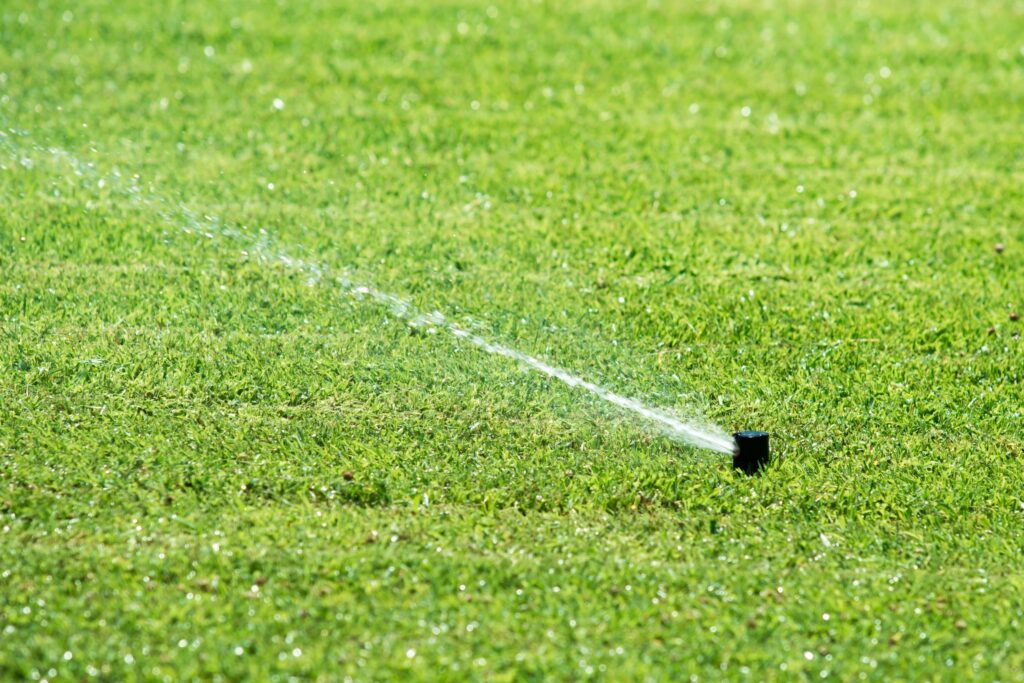


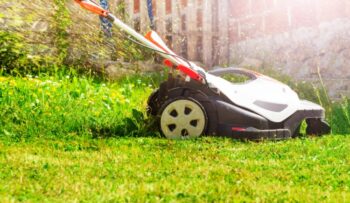

2 Responses
I find it surprising that proper lawn care can help you improve the appearance of your turf while preventing pests and diseases from damaging it. I saw ads that offer these services to individuals and I wanted to learn how important they are. I should share this with my uncle who wants a green landscape as a part of his backyard.
Nice post!